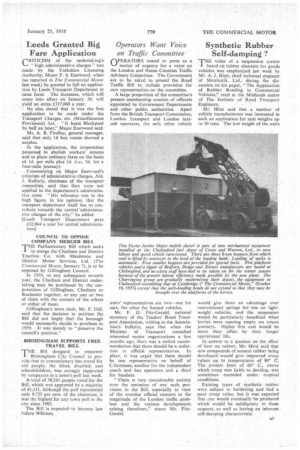Synthetic Rubber Self-dumping?
Page 39

If you've noticed an error in this article please click here to report it so we can fix it.
THE value of a suspension system
based on rubber elements for goods vehicles was emphasized last week by Mr. A. J. Hilst, chief technical engineer of IVIetalastik, Ltd., during the discussion on his paper, "The Application of Rubber Bonding to Commercial Vehicles," read at the Midlands centre of The Institute of Road Transport Engineers.
Mr. Hirst said that a number of vehicle manufacturers was interested in such an application for axle weights up to 10 tons. The low weight of the units wouldgive them an advantage over conventional springs for use on lightweight vehicles, and the suspension would be particularly beneficial when lorrieS were running empty on return journeys. Higher first cost would be more than offset by their longer operational life.
In answer to a queston on the effect of heat on rubber, Mr. Hirst said that new compounds of natural rubber being -developed -would give improved creep values up to temperatures of 80' C. The present limit of 60' C., above which creep was liable to develop, was sometimes exceeded under tropical conditions.
Existing types of Synthetic rubber were sobject to hardening and had a poor creep value, but it was expected that one would eventually be produced which would be satisfactory in these respects, as well as having an inherent • self-damping characteristic.




























































































